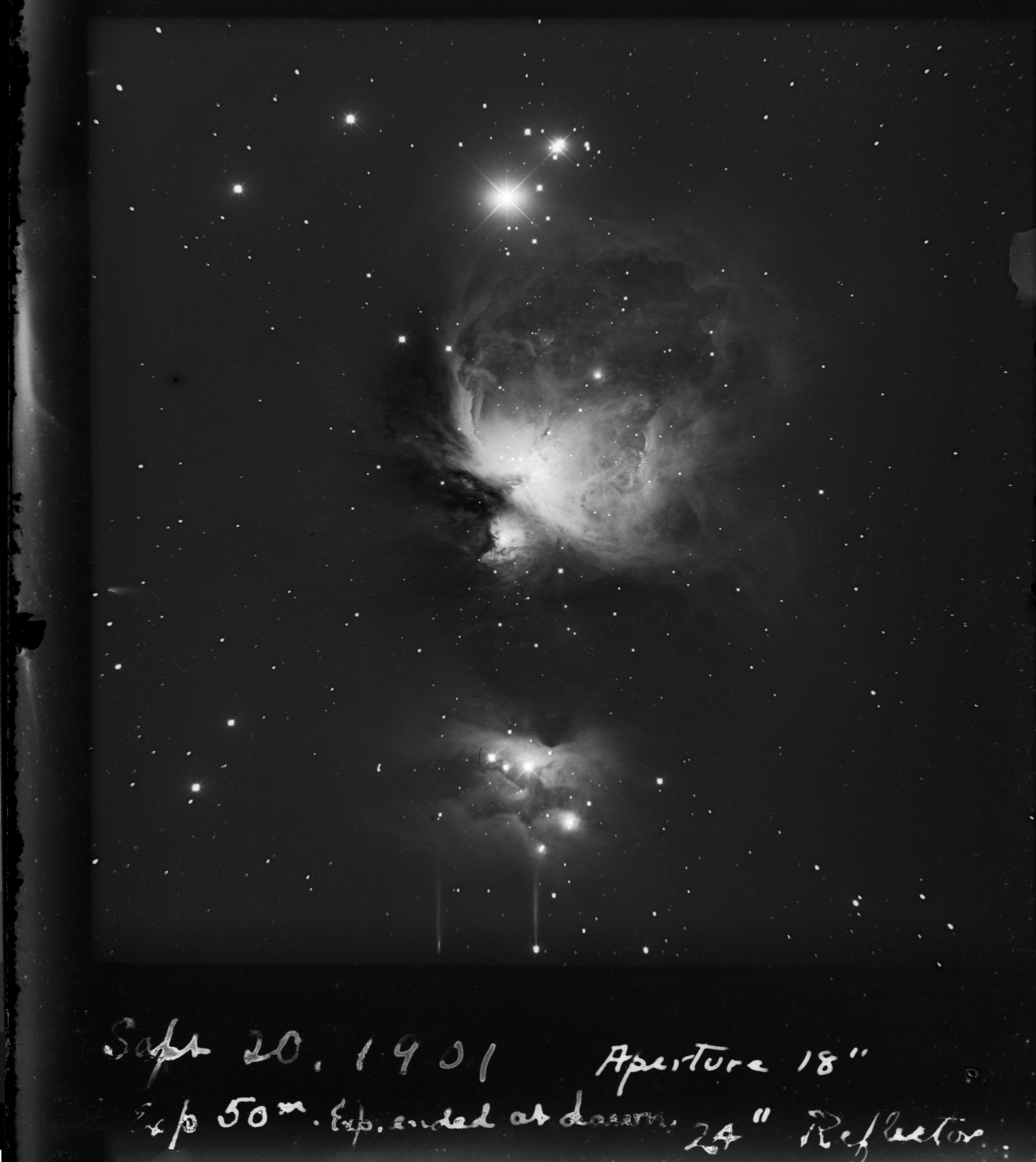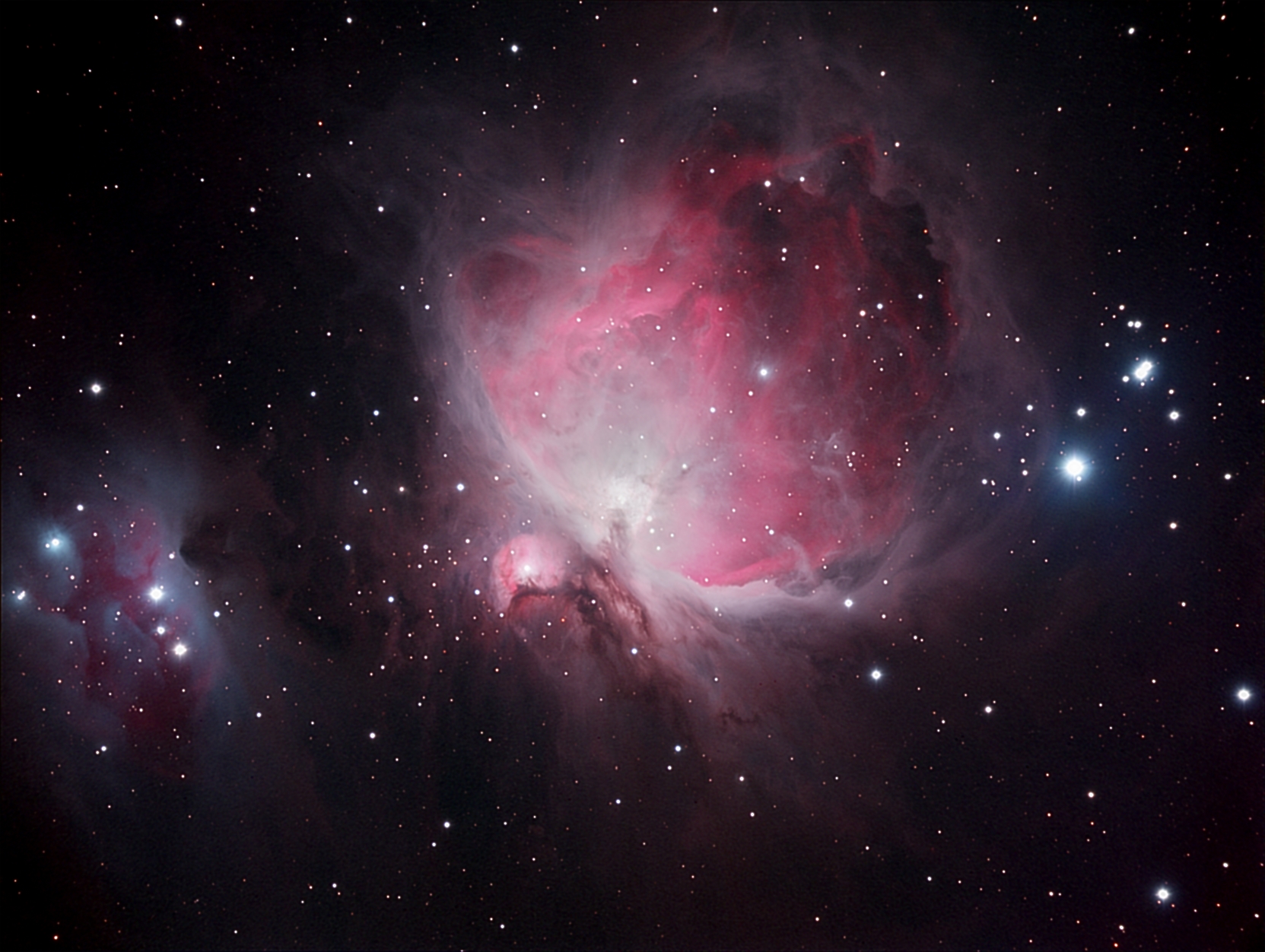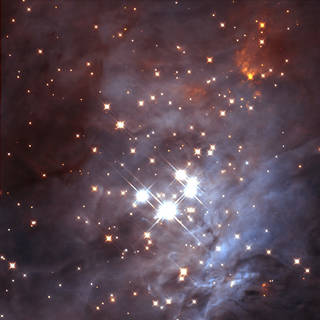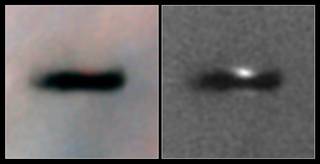The Orion Nebula
The Cosmic Fire of Creation
The Orion Nebula
is one of the most photographed objects in the night sky.
At a distance of 1300 lightyears, the Orion Nebula is one of the brightest nebulae. It is situated underneath Orion's belt, making it easy to spot even with the unaided eye.
"Remarkably recognizable to astrophotographers today, this stunning image of the star forming Orion Nebula was captured in 1901 by American astronomer and telescope designer George Ritchey. His hand written notes indicate a 50 minute long exposure that ended at dawn and a reflecting telescope aperture of 24 inches masked to 18 inches to improve the sharpness of the recorded image. Ritchey's plates from over a hundred years ago preserve astronomical data and can still be used for exploring astrophysical processes.
Astronomy Picture of the Day, 1901 Photograph: The Orion Nebula


"Astrophotographer Brian Davis shared this photo with SPACE.com last month, though he actually took the image during a 3.5-hour stargazing session from a driveway in the suburbs of Sumter, S.C., on Jan. 1, 2012. The iconic Running Man Nebula, or NGC 1977, is also visible toward the left of the image."
NBC News, You've never seen the stunning Orion Nebula like this before
A Stellar Nursery
The Orion Nebula is what's known as a stellar nursery--a region of space that is a hotbed of star formation. Due to its abundance in materials, gas and dust gets drawn together by gravity which kicks off the star formation process.

